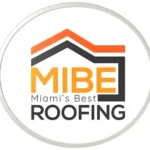Miami’s Roofing Climate: Understanding the Unique Challenges of Roofs in Florida
Introduction to Miami’s Roofing Climate
Miami, Florida is known for its warm and sunny weather, with an average temperature of 77°F (25°C) throughout the year. While the pleasant climate makes it an attractive destination for tourists and residents alike, it also poses unique challenges for roofers and homeowners when it comes to roofing. Miami’s roofers need to be aware of the specific conditions that can affect the lifespan and performance of a roof in the area. In this article, we will explore the unique challenges of roofs in Florida, particularly in Miami.
High Humidity and Heat
One of the biggest challenges facing Miami’s roofing industry is the high humidity and heat. With an average relative humidity of 64% throughout the year, Miami’s roofs are constantly exposed to moisture. This can lead to premature aging and degradation of roofing materials, such as shingles and membranes. Heat also plays a significant role, with temperatures often reaching 90°F (32°C) or higher during the summer months. This can cause roofing materials to expand and contract, leading to cracks and gaps.
Saltwater and Chemical Exposure
Miami’s proximity to the ocean means that roofs are exposed to saltwater and chemical pollution. Saltwater can corrode metal roofing materials and weaken the adhesive bonds between layers of roofing membranes. Chemical pollutants, such as fertilizers and pesticides, can also damage roofing materials and compromise their waterproofing properties. Roofs in Miami need to be designed and installed with these chemicals in mind to ensure a long and trouble-free life.
Wind and Storm Damage
Miami is known for its strong winds and storms, which can cause significant damage to roofs. The area is prone to hurricanes, tropical storms, and thunderstorms, which can bring heavy rainfall and high winds. This can lead to roof leaks, tears, and collapse, resulting in costly repairs and potential safety hazards. Miami’s roofers need to design and install roofs that can withstand these extreme weather conditions.
Pests and Wildlife
Florida is home to a variety of pests and wildlife, including rats, raccoons, and birds. These creatures can cause significant damage to roofs by chewing through materials, creating holes, and leaving behind debris. In addition, their urine and feces can stain and discolor roofing materials. Miami’s roofers need to take measures to prevent pest and wildlife infestations, such as using animal-deterrent granules and installing pest-control systems.
Tree Branches and Debris
Miami’s lush vegetation and frequent storms can lead to tree branches and debris accumulating on roofs. This can cause damage to roofing materials, create holes and gaps, and compromise the roof’s waterproofing properties. Miami’s roofers need to regularly inspect roofs for debris and remove it to prevent damage and potential safety hazards.
Roofing Materials and Maintenance
Given the unique challenges facing Miami’s roofs, it’s essential to choose the right roofing materials and maintenance schedule. Asphalt shingles are a popular choice in the area due to their durability and affordability. However, they may not be suitable for roofs with heavy wind and storm exposure. In these cases, metal roofing materials, such as corrugated galvanized iron (CGI), may be a better option. Regular inspections and maintenance, including cleaning and repair of damaged areas, are also crucial to extending the life of a roof.
Conclusion
Miami’s roofers face unique challenges when it comes to designing and installing roofs in the area. The high humidity and heat, saltwater and chemical exposure, wind and storm damage, pests and wildlife, tree branches and debris, and the importance of roofing materials and maintenance all require careful consideration. By understanding these challenges, Miami’s roofers can design and install roofs that are durable, waterproof, and long-lasting, ensuring the safety and security of homeowners and businesses alike. freeslots dinogame telegram营销




